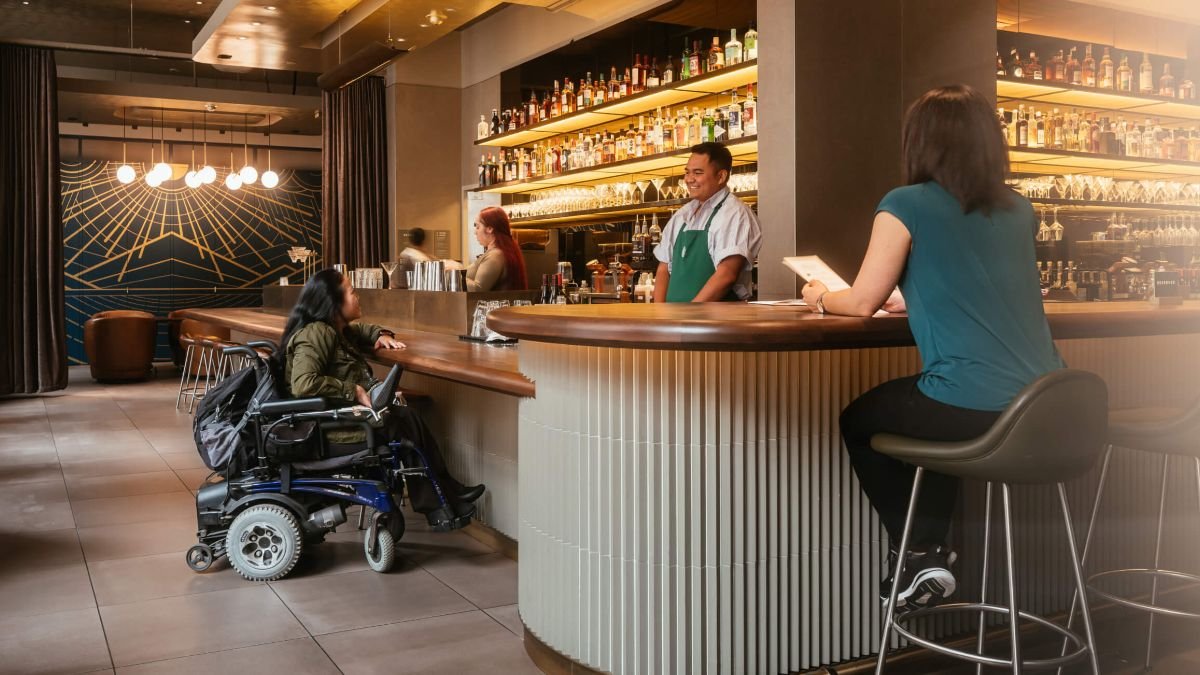Universal Design in Public Spaces
Universal Design in Public Spaces
The Challenge of Truly Inclusive Access
Creating public spaces that are accessible to everyone is central to the principles of universal design, yet achieving this goal remains a significant challenge. Universal design goes beyond simply adhering to accessibility standards like those mandated by the ADA; it involves designing spaces that are intuitive and usable for people of all abilities and ages. However, in many public spaces, full inclusivity is far from reality due to cost, design limitations, and a lack of awareness.
One key issue is that many public spaces are retrofitted for accessibility rather than being designed with universal use in mind from the beginning. Adding features such as ramps or automatic doors to existing structures is often seen as an afterthought, leading to designs that are accessible but not fully integrated or intuitive. For example, entrances designed with a separate ramp instead of an inclusive sloped entrance can make people who use wheelchairs feel isolated rather than part of the flow of movement.
Another challenge is accommodating a wide range of needs beyond physical accessibility. Universal design in public spaces also involves creating environments that cater to those with sensory, cognitive, and emotional needs. This might include features like wayfinding aids, quiet zones, and clear signage for those with visual or cognitive impairments. However, these aspects of design are often overlooked or undervalued, creating spaces that unintentionally exclude many people.
Cost can also be a limiting factor, as many municipalities or developers are reluctant to invest in universal design without understanding its long-term value. However, embracing universal design leads to public spaces that are more usable, welcoming, and functional for everyone. To truly prioritize accessibility in public spaces, designers need to view universal design as essential rather than optional, fostering an inclusive environment where everyone can navigate, enjoy, and interact equally.
Interested in reading more about universal design in public spaces? Check out this article from UGreen, "What is Universal Design?: A Guide For Architects and Interior Designers".
Designer Monologues the Podcast from IIDA New England with your host Katie Corcoran Garcia is officially LIVE!! On this show, we’ll share the stories behind the design of repurposing, developing and reshaping our communities. Incubated from the minds and skills of New England’s talented design community, you’ll hear how visual inspiration can come from nature, our history, current trends and more as we take you on a story-telling journey behind design.
Check out our latest episode here.
Stay tuned for the next President's Message!
Be sure to check in with the IIDA New England calendar for upcoming events (both virtual and in-person) offered in our community. Here's a sneak peek at some upcoming events:
IIDA NE Providence Local Project Tour at Carpenters Local Union 330 // Thursday, December 5 (in person)
IIDA NE Breakfast & Bills - Rhode Island // Friday, December 6 (in person)
IIDA NE CEU Blitz // December 9-11 and December 16-18 (virtual)
Check out the list of IIDA New England Emerging Leaders Network (ELN) Class of 2023 and the Leadership Exploration & Development (LEAD) Class of 2023!
Do you have an idea that you would like to share with the design community or see highlighted here in The Wire? Share your ideas here.
Stay tuned for the next Sponsor Spotlight!
Avatar Coffee Project featuring Brando Green tile floors by TileBar, designed by H. Hendy & Associates.
Follow IIDA New England on social media and visit our website to keep up with the latest and greatest!










